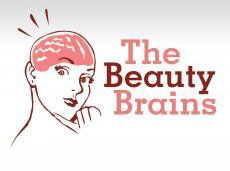Karen is inquisitive…Can you kindly explain what makes Pureology shampoo feel so much different than anything else I’ve tried? I’m guessing it’s not the botanical infusion!
The Right Brain responds:
Good guess, Karen, the difference has nothing to do with green tea or sandalwood. It’s all about the cleansers and conditioners.
Pureology ingredients
Most shampoos are based on a blend of 1 or 2 primary surfactants with another 1 or two secondary surfactants. Pureology (at least the Anti-fade variant), has 7, count ‘em 7 different cleansing agents: Sodium Lauryl Sulfoacetate, Disodium Laureth Sulfosuccinate, Sodium Cocoyl Isethionate, Sodium Lauryl Sarcosinate, Cocamidopropyl Hydroxysultaine, Cocamidopropylamine Oxide, and Decyl Glucoside. (Actually the total number of surfactants is more like 9 or 10 if you count some of the minor ingredients.) This cleansing blend gives Pureology an extraordinarily rich lather for a sulfate-free shampoo.
On top of that, it’s formulated with three potent conditioning agents: amodimethicone, a organo-modified silicone that provides excellent conditioning effect; Polyquaternium-7 which also gives excellent wet slip; and a chemically modified guar gum that smooths hair.
Is Pureology perfect?
So what’s the downside, you ask? For one thing the claims about controlling color fading are over stated. Based on research we’ve seen, sulfate-free shampoos do not strip less color than their sulfate containing cousins. Plus, at $28 for 10 ounces, Pureology is not cheap! You might want to consider trying EverPure shampoo because it’s a similar formula that costs a lot less.
Would you spend $28 on a bottle of shampoo? Leave a comment and share your thoughts on shampoo spending with the rest of the Beauty Brains community.
